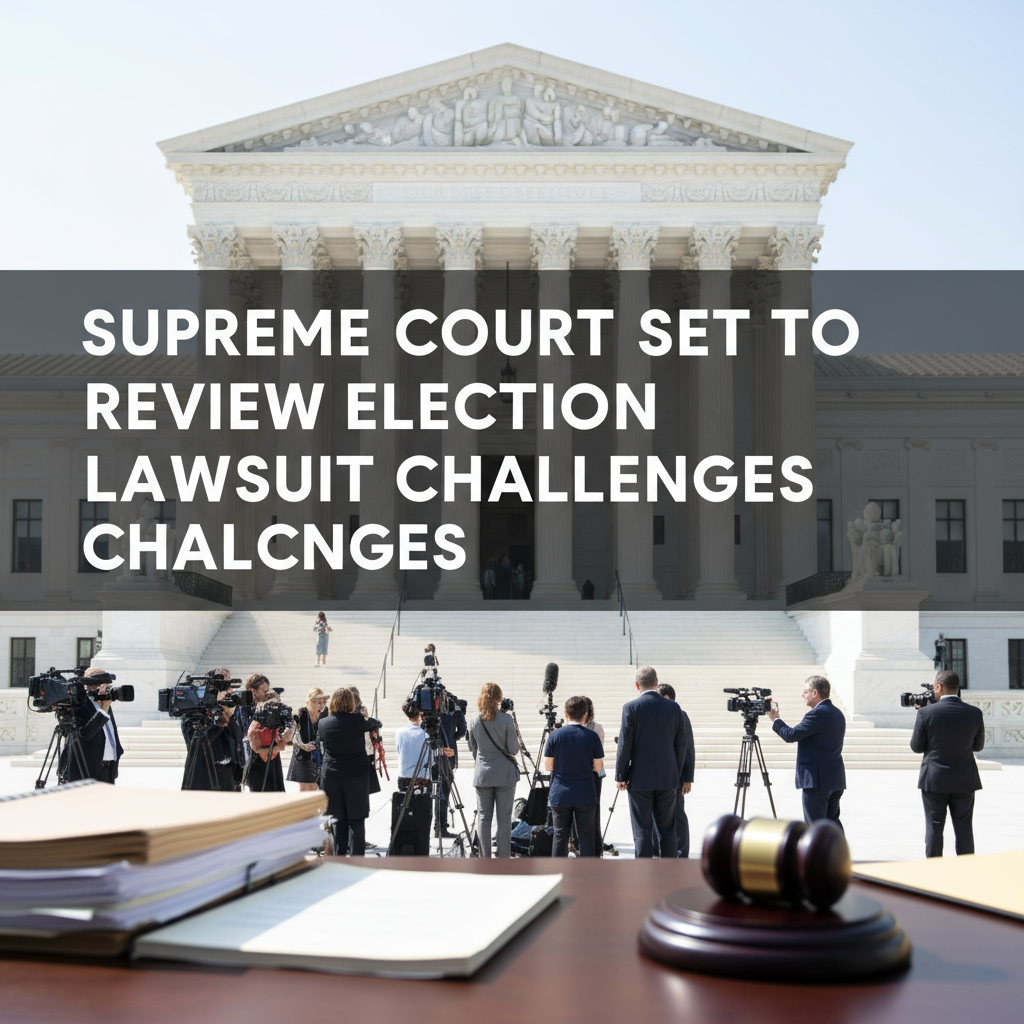Supreme Court Set to Review Election Lawsuit Challenges
- Supreme Court’s review may reshape electoral processes.
- Key issue: Mail-in ballots and candidate standing to sue.
- Potential implications: Increased litigation and questioning of election rules.
- Broader cases: Addressing race in redistricting and executive actions.
- Future elections: May see significant changes in voting rights and procedures.
- Case Involving Mail-in Ballots and Candidate Standing
- Broader Implications of Candidate Standing
- Other Election-Related Cases and Issues
- Implications for Future Elections
- Conclusion
Case Involving Mail-in Ballots and Candidate Standing
One of the most significant cases on the docket involves a challenge to Illinois’ election law concerning mail-in ballots and the 14-day grace period for receipt and counting postmarked ballots. This challenge, spearheaded by Rep. Mike Bost (R-IL) and two other Republican candidates, argues that the existing grace period poses an unfair disadvantage. The plaintiffs contend that this grace period necessitates increased campaign resources to monitor late-arriving ballots, potentially diminishing their electoral chances.
According to SCOTUS Blog, the underpinning of this case focuses on the concept of “standing.” This legal doctrine specifies who is eligible to bring a lawsuit before a court. The plaintiffs assert that their status as candidates affords them a concrete interest in contesting election rules—rules that they argue affect their campaigns, regardless of whether they are directly impacted by individual late ballots.
The Supreme Court has agreed to hear oral arguments regarding these candidates’ standing to sue. The outcome of this case could establish a pivotal precedent for future election law challenges across the country (Democracy Docket). Should the court rule that candidates possess standing to challenge broader election regulations, it may significantly enhance the ability to question various electoral rules—an action that could lead to increased litigation surrounding elections.
Broader Implications of Candidate Standing
The ramifications of establishing broader standing for candidates could unleash a wave of legal challenges in upcoming elections. Currently, the standards for proving injury in election-related lawsuits are quite stringent; candidates must often demonstrate that a specific election rule irreparably harms their campaign. If the Supreme Court sets a new precedent allowing candidates to sue based on a perceived threat to their electoral opportunity, legal experts predict numerous claims and counterclaims regarding election procedures will proliferate.
This potential influx of litigation may lead to a more charged legal landscape for future elections, raising questions about the timing and administration of elections, the integrity of mail-in voting procedures, and the very nature of challenges against established electoral regulations (Courthouse News).
Other Election-Related Cases and Issues
The scrutiny of election laws does not end with mail-in ballot challenges. The Supreme Court is also set to consider several significant cases concerning other aspects of electoral law, including the use of race in redistricting. The implications of these cases can cast long shadows on election outcomes, as they affect how voting districts are drawn and how representation is allocated.
Redistricting and the Use of Race
According to a CBS News article, upcoming cases may touch on the legal boundaries surrounding race and its influence in the redistricting process. Given that electoral maps dictate the representation of various demographic groups, how the court interprets these laws could affect voting power for minority populations across the country.
Ensuring fair representation and challenging gerrymandering practices through judicial scrutiny is always timely and relevant. The cases presented may determine how aggressively states can wield race as a criterion in drawing district lines and managing electoral fairness.
Challenges Related to Trump’s Executive Actions
Adding to the complexity of the Supreme Court’s new term are the ongoing legal battles regarding former President Donald Trump’s policies, particularly those encompassing executive actions related to immigration and other contentious political issues. The court’s evaluations of these challenges will further define the boundaries of executive power and influence the interplay between legislation and executive decrees (CBS News).
These discussions are crucial in determining how judicial interpretations can uphold or dismantle policies that affect vast swaths of the population, particularly in polarized political environments.
Implications for Future Elections
The Supreme Court’s forthcoming decisions on these election-related cases will undoubtedly usher in changes that could reshape the very foundation of electoral law in the United States. With mounting legal challenges expected, voters, candidates, and advocates should brace for a potentially tumultuous electoral environment in the years to come.
Increased Litigation and a Contentious Electoral Landscape
The upcoming decisions could lead to an uptick in litigation surrounding election laws, thus creating a battleground for various parties to contest the rules under which they operate. Already, election law has become a charged aspect of contemporary politics, and the Supreme Court’s actions will likely amplify this contentious atmosphere further (Courthouse News).
Should the court decide in favor of broader access to challenging election rules, we may see waves of candidates emboldened to push back against any perceived injustices. In this sense, the Supreme Court’s upcoming rulings will not merely address isolated grievances but could fundamentally redefine how electoral disputes are processed in the judicial system.
The Impact on Voting Rights and Procedures
The implications extend to various facets of voting rights and electoral procedures as well. A potential ruling favoring the increased standing of candidates may reshape not only how elections are contested but also how voting itself is conducted. The preservation of mail-in voting, candidate participation guidelines, and overall electoral frameworks in the United States will all hang in the balance as the Supreme Court contemplates these crucial issues (Justia).
Conclusion
The Supreme Court’s review of election lawsuit challenges offers a critical lens into the evolving dynamics of electoral law in America. As the discussions unfold, the potential for increased litigation, scrutinized voting rights, and pivotal changes to legal precedents loom large over future elections. Voters and candidates alike watch with bated breath as these cases may shape the parameters of democratic participation for years to come.
For more trending news, visit NotAIWorld.com.
